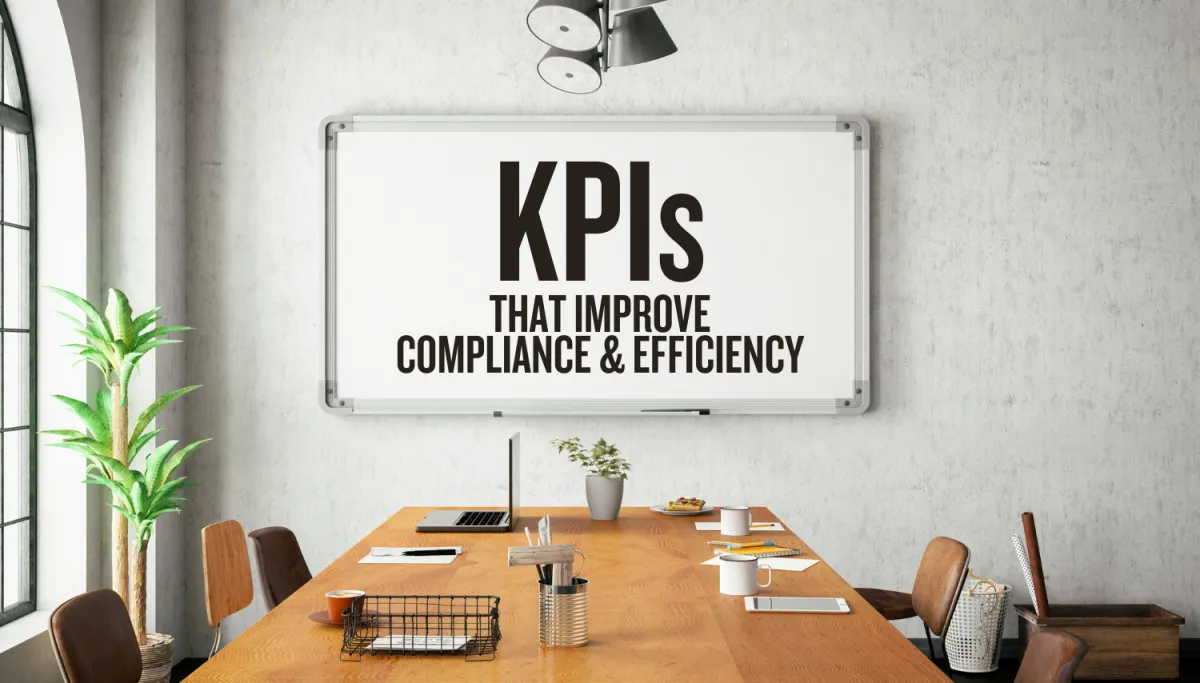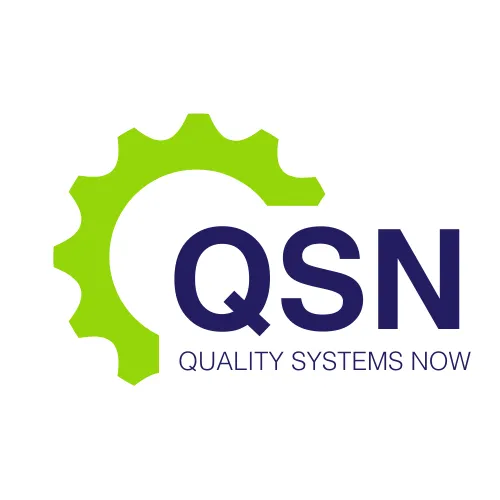LATEST NEWS

KPIs That Improve Compliance and Efficiency
While compliance ensures adherence to regulatory standards, efficiency drives operational performance and reduces costs. However, achieving both simultaneously requires a data-driven approach that leverages Key Performance Indicators (KPIs) to monitor progress, identify gaps, and drive continuous improvement. This article explores the critical KPIs that organizations can use to enhance compliance and efficiency, ensuring a balance between regulatory requirements and operational excellence.
The Role of KPIs in Driving Compliance and Efficiency
Key Performance Indicators (KPIs) are measurable values that demonstrate how effectively an organization is achieving its key objectives. In the context of compliance and efficiency, KPIs serve as a bridge between regulatory requirements and operational performance. They provide actionable insights into the effectiveness of quality management systems, highlight areas for improvement, and enable organizations to make data-driven decisions.
By tracking the right KPIs, organizations can ensure that their processes are not only compliant but also optimized for efficiency. This dual focus helps reduce waste, minimize risks, and enhance overall business performance. Below, we explore the most impactful KPIs for improving compliance and efficiency in the pharmaceutical and medical device industries.
Essential KPIs for Compliance
1. Regulatory Audit Findings
Regulatory audits are a critical component of compliance in highly regulated industries. Tracking the number and severity of audit findings provides insight into the effectiveness of your quality management system. A high number of findings or recurring issues may indicate gaps in training, processes, or documentation. By addressing these issues proactively, organizations can reduce the risk of non-compliance and improve their audit performance.
2. Deviation and CAPA Metrics
Deviations from standard operating procedures (SOPs) and the effectiveness of Corrective and Preventive Actions (CAPAs) are key indicators of compliance. Track metrics such as:
Number of deviations reported
Time to resolve deviations
CAPA effectiveness (percentage of CAPAs that prevent recurrence)
These metrics help identify trends, root causes, and areas for improvement, ensuring that deviations are addressed promptly and effectively.
3. Training Completion Rates
Employee training is a cornerstone of compliance. Tracking training completion rates ensures that all employees are adequately trained on relevant regulations, SOPs, and quality principles. Low completion rates or delays in training may indicate gaps in your training program, which could lead to compliance risks.
4. Batch Release Times
The time taken to release batches for distribution is a critical compliance metric. Delays in batch release may indicate inefficiencies in quality control processes or issues with documentation. By monitoring this KPI, organizations can identify bottlenecks and streamline their processes to ensure timely release without compromising quality.
Essential KPIs for Efficiency
1. Overall Equipment Effectiveness (OEE)
OEE is a widely used KPI for measuring manufacturing efficiency. It considers three factors: availability, performance, and quality. A high OEE score indicates that equipment is operating at optimal levels, minimizing downtime and waste. By tracking OEE, organizations can identify inefficiencies in their production processes and implement targeted improvements.
2. Cycle Time
Cycle time measures the time required to complete a specific process, from start to finish. Reducing cycle time is a key driver of efficiency, as it enables organizations to produce more in less time. Track cycle times for critical processes such as manufacturing, packaging, and quality testing to identify opportunities for optimization.
3. First Pass Yield (FPY)
FPY measures the percentage of products that meet quality standards without requiring rework or correction. A high FPY indicates efficient processes and minimal waste, while a low FPY may signal issues in production or quality control. By improving FPY, organizations can reduce costs and enhance productivity.
4. Cost of Quality (CoQ)
The Cost of Quality (CoQ) is a financial KPI that measures the total cost of ensuring product quality, including prevention, appraisal, and failure costs. A high CoQ may indicate inefficiencies in quality management processes, such as excessive rework or waste. By reducing CoQ, organizations can improve both compliance and efficiency.
Integrating Compliance and Efficiency KPIs
While compliance and efficiency are often viewed as separate objectives, they are deeply interconnected. For example, addressing deviations (a compliance KPI) can lead to process improvements that enhance efficiency. Similarly, optimizing cycle times (an efficiency KPI) can reduce the risk of errors and improve compliance.
To fully leverage the power of KPIs, organizations should integrate compliance and efficiency metrics into a unified dashboard. This enables leaders to monitor performance in real-time, identify correlations between metrics, and make informed decisions that drive both compliance and efficiency.
Best Practices for Implementing KPIs
1. Align KPIs with Business Objectives
Ensure that your KPIs are aligned with your organization’s strategic goals. For example, if reducing waste is a priority, focus on KPIs such as OEE and FPY.
2. Use Technology to Track KPIs
Invest in software solutions that automate data collection and reporting. This not only saves time but also ensures accuracy and consistency in your KPI tracking.
3. Communicate KPIs Across the Organization
Share KPI data with employees at all levels to foster a culture of accountability and continuous improvement. Regularly review KPI performance in team meetings and use the data to set actionable goals.
4. Continuously Review and Refine KPIs
As your organization evolves, so should your KPIs. Regularly review your metrics to ensure they remain relevant and aligned with your objectives.
KPIs are powerful tools for improving compliance and efficiency in the pharmaceutical and medical device industries. By tracking the right metrics, organizations can identify gaps, optimize processes, and drive continuous improvement. Whether it’s reducing audit findings, improving OEE, or minimizing cycle times, KPIs provide the insights needed to achieve both regulatory compliance and operational excellence.
By integrating compliance and efficiency KPIs into a unified framework, organizations can create a culture of data-driven decision-making that enhances performance, reduces costs, and ensures long-term success. In an industry where compliance and efficiency are critical, KPIs are the key to unlocking your organization’s full potential.
Tailored Quality Management Solutions
Every organization is unique, with its own set of challenges and objectives. Quality Systems Now offers tailored quality management solutions designed to meet the specific needs of your organization. Whether you’re looking to streamline your quality control processes, enhance your risk management framework, or implement a culture of continuous improvement, Quality Systems Now can help.
Conduct a thorough assessment of your current quality management system.
Identify gaps and opportunities for improvement.
Develop and implement customized solutions that align with your strategic goals.
By partnering with Quality Systems Now, organizations can build a quality management system that not only meets regulatory requirements but also drives business performance.
Regulatory Expertise and Support
Navigating the complex landscape of regulatory requirements can be daunting. Quality Systems Now provides regulatory expertise and support to help organizations stay ahead of compliance challenges.
Regulatory Gap Analysis: Identify areas where your organization may fall short of regulatory requirements and develop action plans to address them.
Audit Preparation: Prepare for regulatory audits with confidence, ensuring that all documentation and processes are in order.
Compliance Consulting: Access expert guidance on regulatory changes, industry best practices, and emerging trends.
With Quality Systems Now by your side, you can ensure that your organization remains compliant while focusing on achieving operational excellence.
Driving a Culture of Continuous Improvement
At the heart of Quality Systems Now’s approach is a commitment to fostering a culture of continuous improvement.
Implement Lean and Six Sigma methodologies to optimize processes and reduce waste.
Encourage employee engagement and innovation through workshops, brainstorming sessions, and cross-functional projects.
Recognize and reward employees who contribute to quality and efficiency improvements.
By embedding continuous improvement into your organization’s DNA, Quality Systems Now helps you achieve sustainable growth and long-term success.
